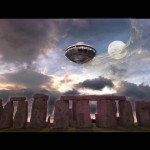Deep within the cosmos, amid the countless stars that adorn our night sky, there is one celestial body that stands out like a true enigma, capturing the attention of astronomers and stargazers. From the historic discovery by Dutch astronomer Jacobus Kapteyn to the potential presence of habitable planets in its orbit, this article unveils the intriguing story of Kapteyn’s Star and its place in the grand cosmic tapestry. Join us as we venture into the heart of space, where ancient stars and potential exoplanets beckon with tales of age and habitability, offering a glimpse into the extraordinary possibilities of our universe. Here are the 10 Fascinating Facts about Kapteyn’s Star:
1. History: Dutch astronomer Jacobus Kapteyn first drew attention to a star known as Kapteyn’s Star in 1898. David Gill and Jacobus Cornelius Kapteyn named it CPD-44 612 in 1897 and included it in the Cape Photographic Durchmusterung for the equinox 1875 (-38 to -52). This catalog was based on Gill’s observations at the Cape Observatory between 1885 and 1889 and was created in collaboration with Kapteyn. When Kapteyn examined star charts and photographs, he noticed a star that had seemingly disappeared, named C.Z. V 243 by B.A. Gould in 1873. However, R.T.A. Innes discovered an unrecorded star about 15 arcseconds from the absent star’s position. It was clear that this star had a very high proper motion, exceeding 8 arcseconds per year, and had significantly shifted. Later, CPD-44 612 became known as Kapteyn’s Star, although Robert Innes should have received similar recognition. When Kapteyn’s Star was discovered, it had the highest known proper motion, surpassing Groombridge 1830, but the later discovery of Barnard’s Star had an even higher proper motion. In 2014, two super-Earth candidate planets orbiting Kapteyn’s Star were announced.

2. Name and Location: Kapteyn’s Star, also known as GJ 191 or HD 33793, is a red subdwarf star located in the Pictor constellation, only 12.79 light-years from the Sun, making it one of the nearest halo stars to the solar system. Kapteyn’s Star has a diameter just 30% of the Sun’s, but its brightness is only 1.2% of the Sun’s. Its apparent magnitude is close to 9, and it can be observed with binoculars or a telescope. Kapteyn’s Star might have been part of the Omega Centauri globular cluster in the past, and Omega Centauri itself is a likely remnant of a dwarf galaxy that was swallowed by the Milky Way.
3. Stellar Characteristics: According to parallax measurements from the Gaia satellite, Kapteyn’s Star is approximately 12.76 light-years (3.91 parsecs) away from Earth. About 10,800 years ago, it was at a distance of less than 7.00 light-years (2.15 parsecs) from the Sun and has been moving since then. The star’s size and mass lie between one-fourth and one-third of the Sun’s, with an effective temperature of around 3500 K, though there is some variation in precise measurements among different observers. Kapteyn’s Star is spectroscopically classified as sdM1, indicating that it is a subdwarf with lower luminosity compared to the main-sequence stars that start with the spectral type M1. Its metallicity, often referred to as “metal abundance” and excluding hydrogen and helium, is about 14% of the Sun’s abundance. It is a BY Draconis-type variable star identified as VZ Pictoris in the Pictor constellation. This means that the star’s luminosity varies due to magnetic activity in the chromosphere and its rotational motion, resulting in the appearance of spots moving in and out of view relative to Earth.
Kapteyn’s Star is unique in several ways: it has a high radial velocity, moves retrograde around the Milky Way, and is the closest known halo star to the Sun. It is part of a group of stars that share a common orbital motion in space, known as the Kapteyn moving group. Based on their metallicity, these stars may have originated from Omega Centauri, which is believed to be a remnant of a dwarf galaxy merged with the Milky Way, during which stars like Kapteyn’s Star may have been stripped as tidal remnants.

4. Stellar Proper Motion: When Kapteyn’s Star was discovered, it had the highest known proper motion, surpassing Groombridge 1830, but the subsequent discovery of Barnard’s Star had an even higher proper motion. In 2014, two exoplanets – Kapteyn b and Kapteyn c – were announced to orbit the star, but multiple rejections and confirmations followed, and in 2021, a study overturned the existence of these two “planets.” These “planets” were, in fact, illusions caused by the star’s rotation and activity.
5. Age: On June 3, 2014, scientists announced the latest discovery of exoplanets in the direction of Omega Centauri, a star candidate for potentially supporting life. The newly discovered exoplanet candidate was Kapteyn b, and as the name suggests, this was a planet discovered beyond the Kepler mission, located approximately 13 light-years away from us. Its age, however, is estimated to be 11.5 billion years, making it significantly older than our Sun.
6. Planetary System: In 2014, astronomers discovered two planets – Kapteyn b and Kapteyn c – orbiting Kapteyn’s Star. Kapteyn b is possibly one of the oldest potentially habitable planets known, estimated to be around 11 billion years old. However, Robertson et al. (2015) pointed out that Kapteyn b’s orbital period is a fraction of its estimated stellar rotation period (1/3), suggesting that the planet’s signal is likely a product of stellar activity. The existence of Kapteyn c is not ruled out but requires further observation. Guinan et al. (2016), as well as previous researchers, found a lower value for the star’s rotation, supporting the initial planet discovery, but additional data is needed to confirm the rotation period and resolve the controversy. The so-called 5:2 period commensurability of the planets’ orbits could not be confirmed at the time. Orbital dynamics indicate that the planets are in a state known as “shoulder-surfing co-rotation,” which typically implies long-term dynamical stability. Guinan et al. (2016) suggested that the star may have supported life on Kapteyn b, but when the star was young (~0.5 Gyr) and highly active, the planet’s atmosphere may have been stripped away.

7. Life and Habitability: The universe is only about 13.7 billion years old, suggesting that this planet likely formed very early, roughly 2.5 times the age of Earth, around 20 billion years after the Big Bang. Its long existence implies the possibility of life on this exoplanet or the potential existence of life in the past. Apart from Kapteyn b, there is also a body named Kapteyn c in this system. Both planets have orbits very close to the red dwarf star in the system, but scientists believe Kapteyn b could be a potentially habitable exoplanet with a mass around five times that of Earth, making it a super-Earth, while Kapteyn c likely has extremely low surface temperatures unsuitable for habitation.
8. Gravitational Wobbles: Astronomers discovered the existence of the exoplanets in this system by observing the small gravitational wobbles caused by the presence of the planets around Kapteyn’s Star. The star exhibits tiny wobbles due to the planetary system around it, and these wobbles were captured by the HARPS spectrograph at the La Silla Observatory of the European Southern Observatory in Chile, as well as high-resolution observation equipment at the Keck Observatory in Hawaii. These observations revealed similar signals.
9. Habitable Planets: For the research team, the discovery of potentially habitable planets around Kapteyn’s Star came as a surprise. The star’s mass is only one-third that of the Sun, and it is so close to Earth that it can be observed with amateur telescopes. If the existence of habitable exoplanets in this system is confirmed, it would likely serve as humanity’s first outpost beyond the solar system. Kapteyn b falls within the habitable zone of its star, where conditions could support liquid water, with an orbital period of 48 days, while Kapteyn c, further out, has an orbital period of 121 days and is colder on its surface.

10. Kapteyn b: Kapteyn b has a mass approximately 4.8 times that of Earth, making it a super-Earth. It is located 12.79 light-years away from Earth and is currently the closest known exoplanet to our planet that is potentially habitable. It orbits around the ancient red dwarf star Kapteyn’s Star, which has a mass of only 27% that of the Sun and a radius of 29% of the Sun’s. The star has a surface temperature of 3300°C. Scientists have estimated Kapteyn’s Star’s age to be around 11.5 billion years, much older than our Sun. Clearly, the planet Kapteyn b is also extremely old. Kapteyn b is situated approximately 25 million kilometers from Kapteyn’s Star, within the star’s habitable zone.
END:
As we conclude our journey through the captivating realms of Kapteyn’s Star and the intriguing possibilities of Kapteyn b, we find ourselves standing at the threshold of an exciting and ever-evolving frontier in astrophysics. The mysteries and enigmas that surround this cosmic neighbor, its ancient origins, and the potential for habitable planets have ignited our imaginations. Looking ahead, the future holds boundless promise. Advancements in space exploration and astronomical technology are poised to reveal more about the secrets Kapteyn’s Star and Kapteyn b may still hold. Whether these discoveries lead us to unveil the existence of life beyond our planet or deepen our understanding of the universe’s complexities, one thing is certain: the story of Kapteyn’s Star is far from over.
In the coming years, as telescopes peer deeper into the cosmos and missions venture farther into space, we anticipate that Kapteyn’s Star will continue to unveil its hidden truths. The potential for habitable exoplanets like Kapteyn b may become a beacon of hope and possibility in our quest to understand our place in the universe. With every new revelation, we draw closer to unlocking the enigmatic secrets of our celestial neighbors and embracing the extraordinary future that awaits us among the stars.
More UFOs and mysterious files, please check out our YouTube channel: MysFiles
Is the moon artificial? Evidence Proves the Moon Was Unnaturally Formed








